Mind-boggling magnets could unlock plentiful power
- Published
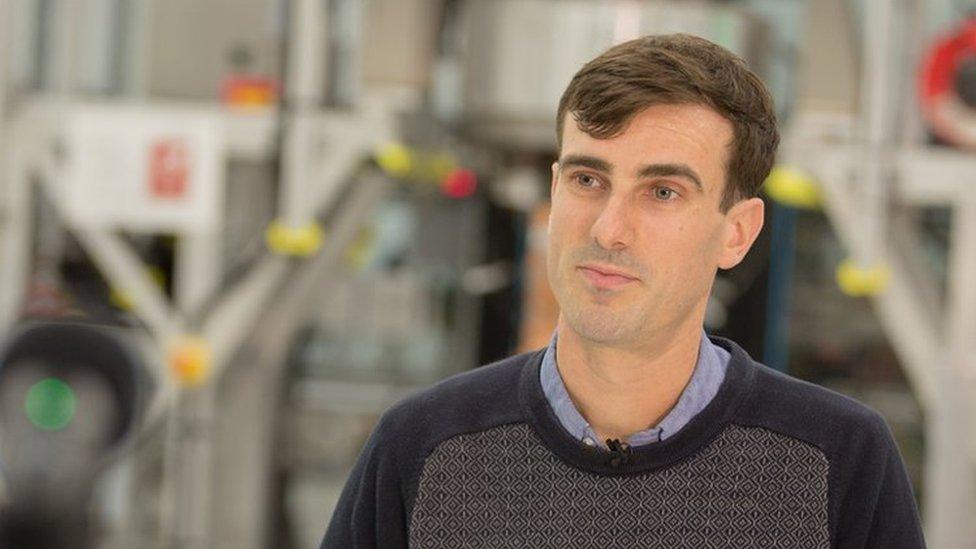
Dr Greg Brittles, Tokamak Energy
Dr Greg Brittles' eyes gleam with excitement when he explains the project he is working on.
"It's every engineer's dream really, to have a project that's technically challenging, which requires you to develop new technology and solutions to hard problems, but that are also simultaneously important for the world to have."
Since finishing his research at Oxford University five years ago, he has been working for Tokamak Energy, a UK start-up that has plans to build a fusion reactor.
Fusion is the reaction that powers the Sun and the stars. If that power could be harnessed on Earth it would provide a plentiful source of energy, from only a tiny amount of fuel and producing no carbon dioxide. What's not to love?
The principle is easy enough to understand. Take hydrogen atoms, add enough heat and pressure and they will fuse together to form helium. During that process some of the hydrogen mass is transformed into heat, which you can use to make electricity.
The catch is that to make fusion happen here on Earth, you have to heat hydrogen isotopes to hundreds of millions of degrees, until they become so energetic they break apart into a whirling state of matter called plasma.
The challenge has always been to contain that plasma. Stars do it with gravity, but on Earth the most common method is to use powerful magnetic fields to keep the plasma confined.
Much of the engineering challenge has come down to building magnets. They have to be powerful enough to contain an insanely hot, whirling mass of matter, but not use so much electricity that your reactor uses more power than it generates.
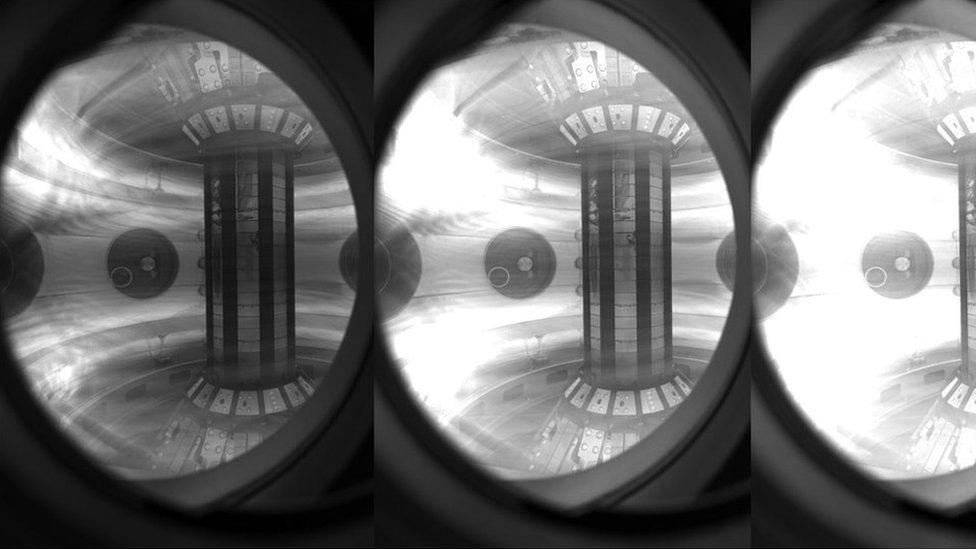
Plasma is confined inside the reactor with powerful magnetic fields
Later this year Dr Bob Mumgaard and his team at Commonwealth Fusion Systems (CFS) will test a ground-breaking magnet that they say can make that leap forward.
Weighing 10 tonnes, the D-shaped magnet is big enough for a person to step through. Around 300km of a very special electromagnetic tape is wound into that D-shape.
The tape itself is a feat of engineering that has taken decades to develop. Thin layers of superconducting rare-earth barium copper oxide (ReBCO) are deposited on a metal tape. When cooled that bundle of tape can conduct electricity extremely efficiently, which is essential as 40,000 amps will pass through it, enough electricity to power a small town.
When the fusion industry says cooled it means the tape is chilled to minus 253C, which might sound absurdly cold to you, but in the world of superconducting materials is actually rather warm.
"It means the refrigerator that we're using is like a refrigerator that could fit in your kitchen," says Dr Mumgaard, who co-founded CFS and is the chief executive.
"The same thing with the previous generation of technology... would need a refrigerator that's the size of your house."
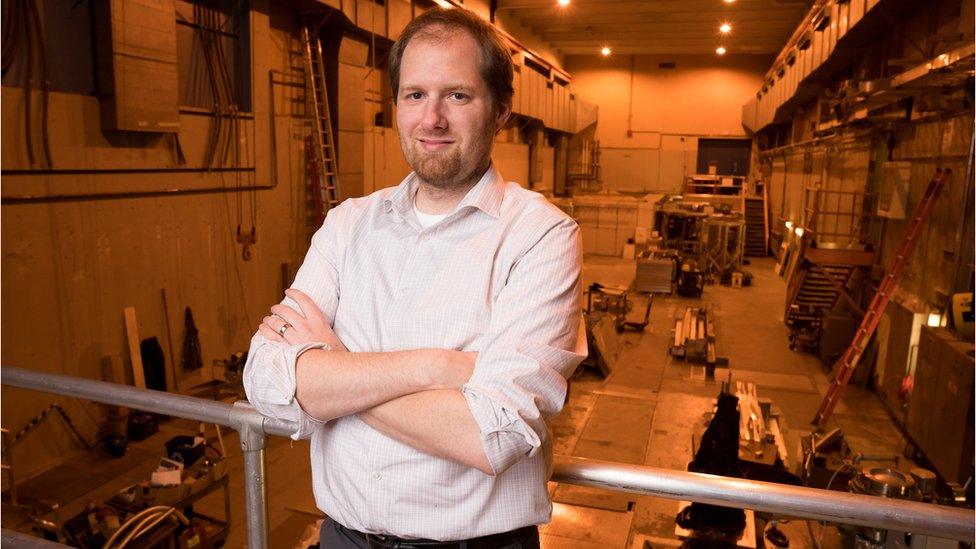
Magnets are no longer "toy scale", says Dr Bob Mumgaard of CFS
CFS is planning a reactor that will house 18 of those magnets, arranged in a ring - a set-up known as a tokamak - and has recently selected a site for the reactor in Massachusetts.
"We were the first to really get this magnet beyond just a tabletop, R&D [reseach and development] scale that people had done at some smaller companies and some national labs.
"We're all at the scale now where it's what you need to build fusion machines. You don't have to go up from something that is sort of a toy scale to something that is at fusion scale," Dr Mumgaard says.
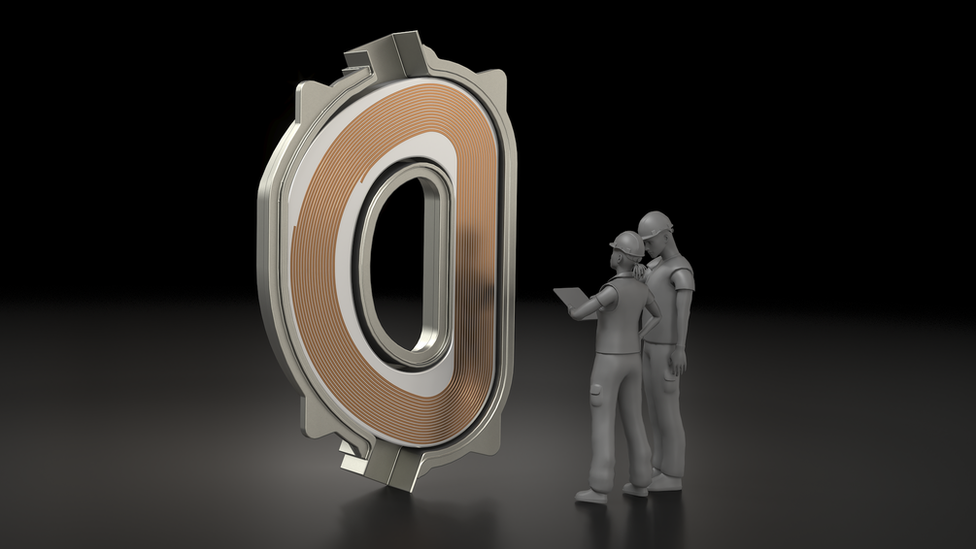
Some 300km of superconducting tape goes into the CFS magnet
The leap forward in magnet technology is also central to the fusion project at Tokamak Energy in the UK.
Dr Brittles has spent the last five years developing that technology and is currently helping to build a demonstrator that will have a series of powerful magnets working together.
"It will be an assembly of many, many coils generating forces that are all interacting and pulling on one another forming a balanced set. This has to be controlled or the forces could become imbalanced," he explains.

Tokamak Energy had to work out how to wind delicate superconducting tape into coils
The forces that such magnetic fields can generate are mind-boggling. When operating at full power, Dr Brittles likens the force generated by his magnets to double the pressure at the bottom of the deepest ocean trench.
When those magnets are ready, they will go into a spherical tokamak - an apple-shaped fusion reactor.
Research suggests such a design will generate more energy for each unit of power it uses, than the more commonly used doughnut-shaped tokamak - the design that CFS and others are using.
"The real challenge is commercial fusion. And that's really what's driving us, why we're focusing on the spherical tokamak because of the long-term commercial advantages," says Dr David Kingham, one of the founders of Tokamak Energy and currently executive vice chairman.


"We think our technology will be deployable in a fusion pilot plant in the early 2030s," he says. "I think it will be a global race. There are interesting private ventures in the States. And we will be in a race with them."
The promise of a working fusion reactor has been around for decades (and always will be, so the old joke goes).
The biggest project is under way in southern France where a consortium of nations are building ITER, a giant reactor that has, so far, cost billions of pounds to build and is running years behind its original schedule.
However, more compact designs like those planned by Tokamak Energy and CFS are attracting private investors, who are betting they will be viable commercial propositions.
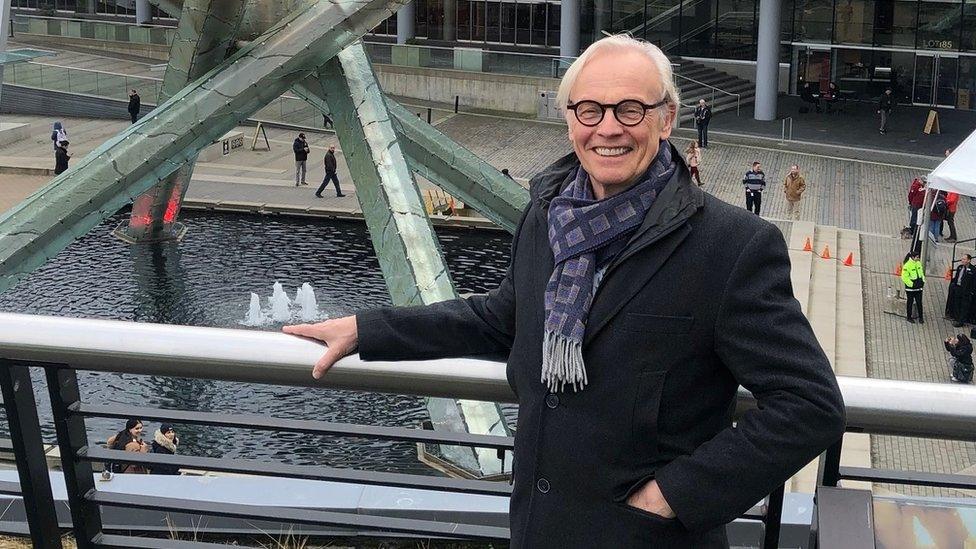
Dr Wal van Lierop's investment firm has put tens of millions of dollars into fusion technology
Dr Wal van Lierop founded his venture capital firm, Chrysalix, 20 years ago and, since 2008, has invested tens of millions of dollars in Canadian firm General Fusion.
Historically, he says, the fusion industry has struggled to raise finance, in part because so much money has been sunk into ITER, but that is all changing.
"I see more money being invested, more interest, and people are starting to realise that this is a very big platform technology and that it is not any longer something that may or may not work by 2050."
Dr van Lierop points out that the potential prize is huge. The global electricity market is worth around $3 trillion (£2.15tn) a year and is only likely to get bigger.
"If this [fusion] is successful, this will open up the largest industry transition that we have ever seen."
Back at the coal face (or perhaps plasma face), Dr Brittles confesses that there is still a lot of engineering work to be done, but he is confident.
"We're working hard to tackle lots of challenges that could trip us up at any point. But from where we sit, there's nothing that stands in the way that I think is a showstopper."
Follow Technology of Business editor Ben Morris on Twitter, external.